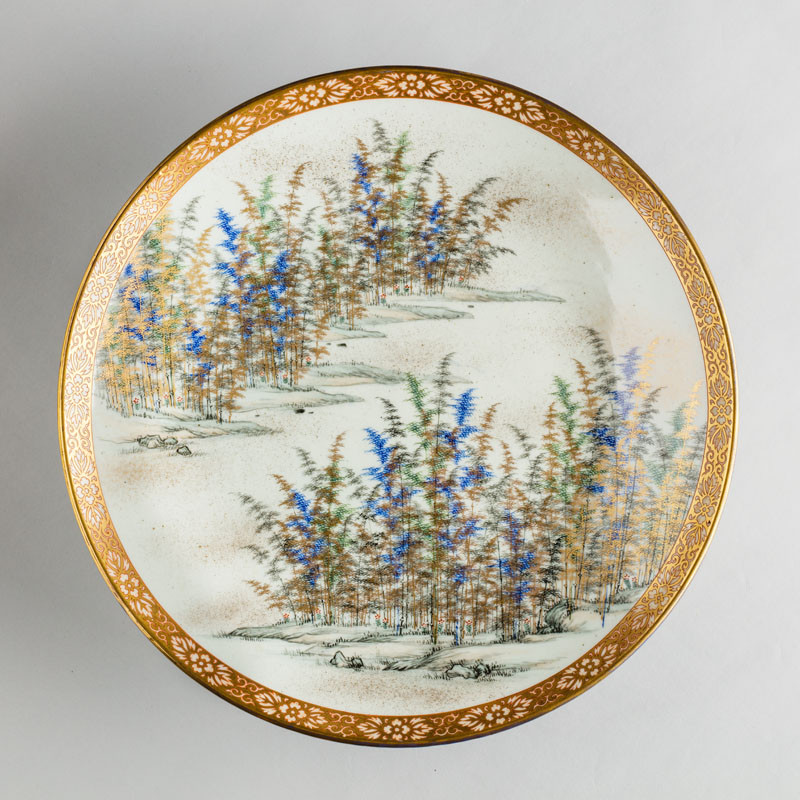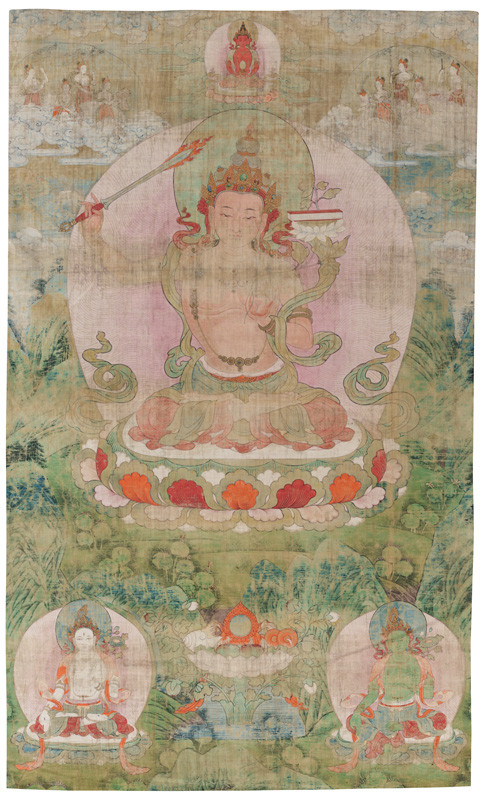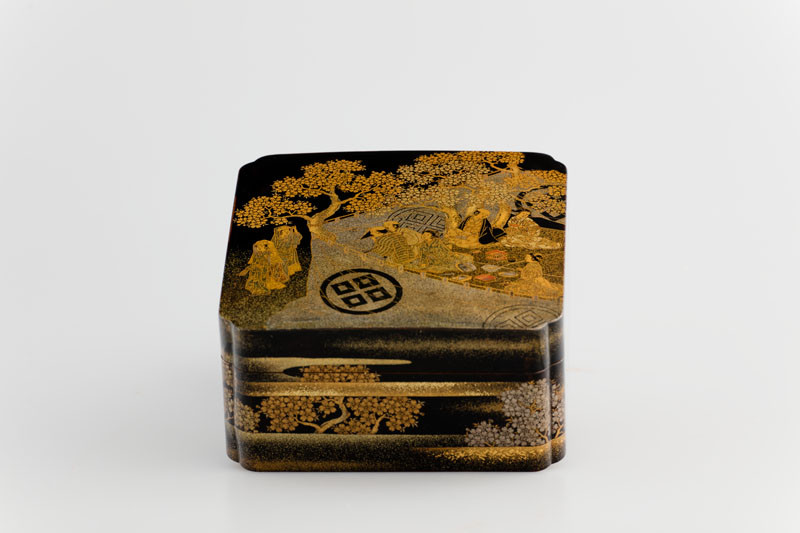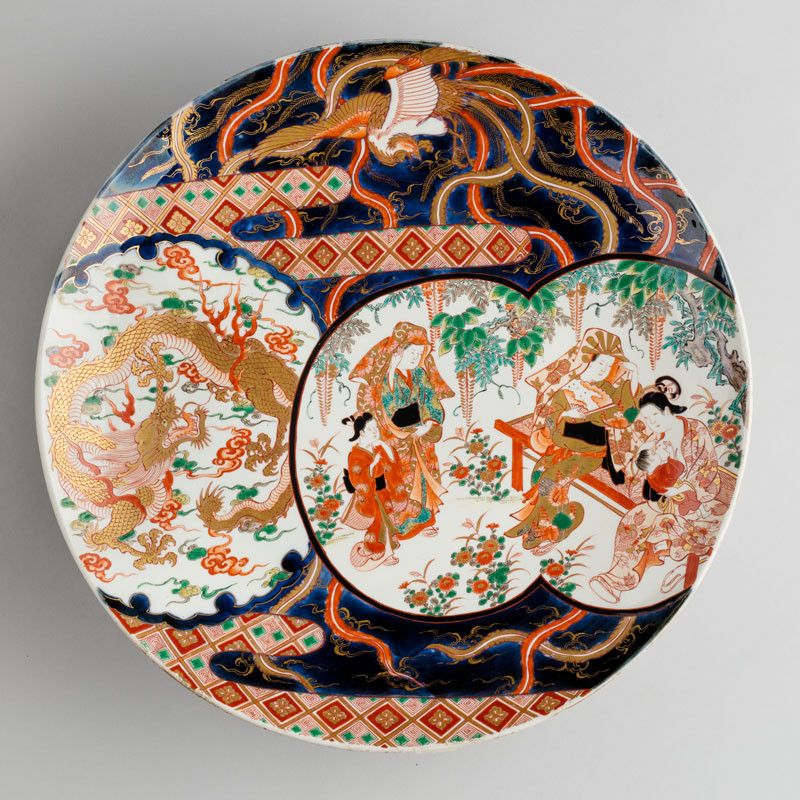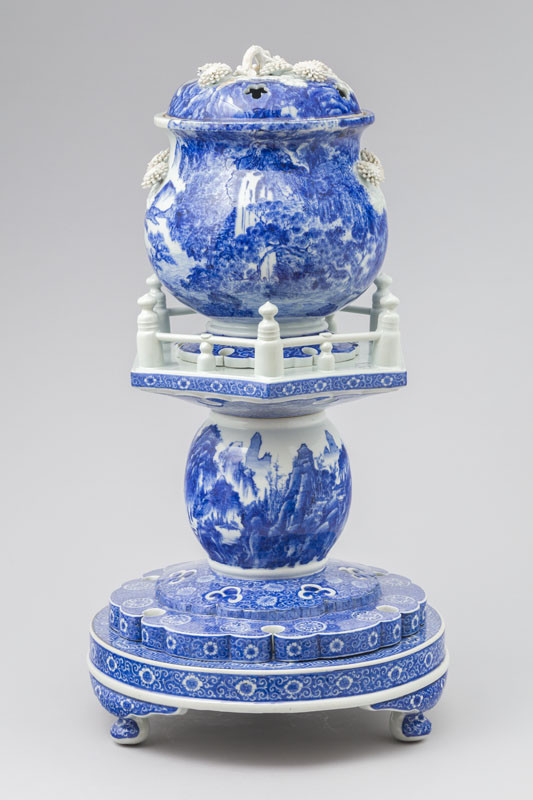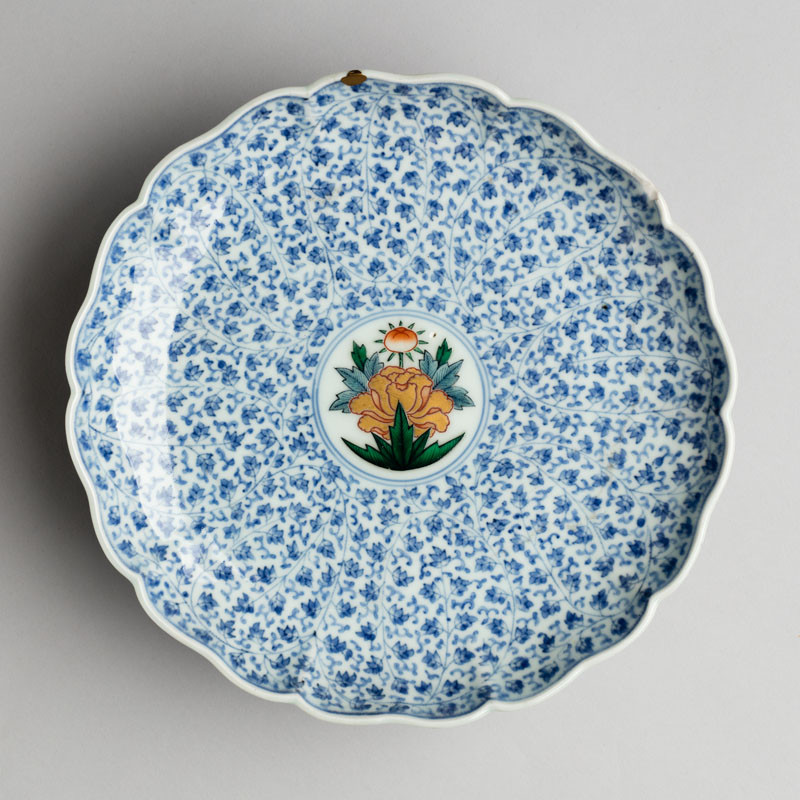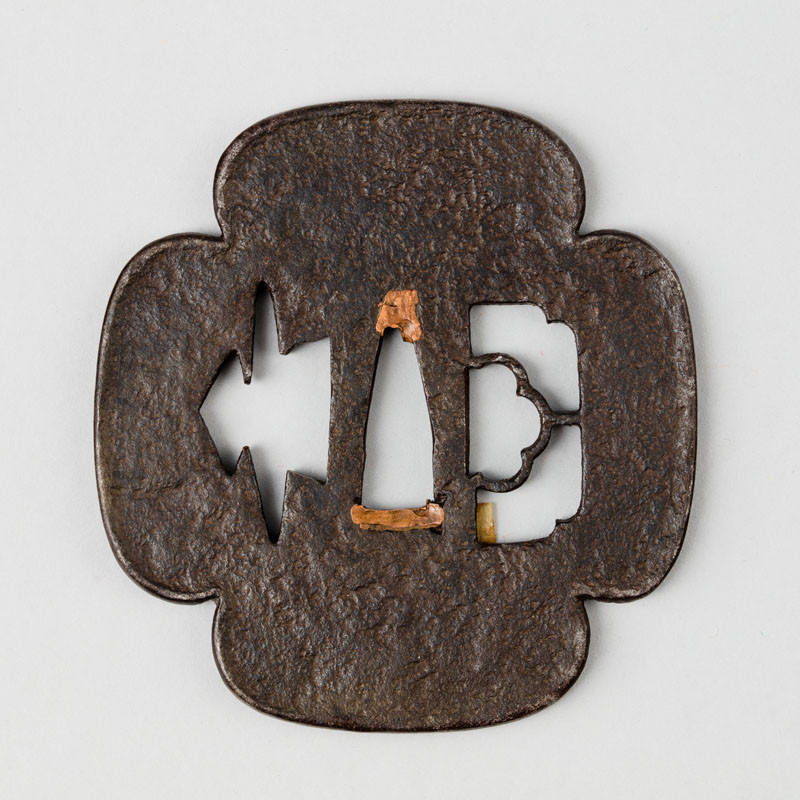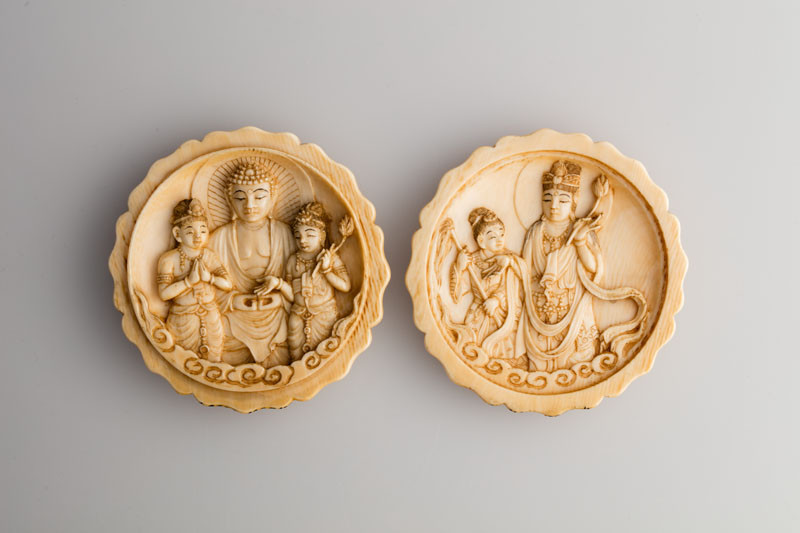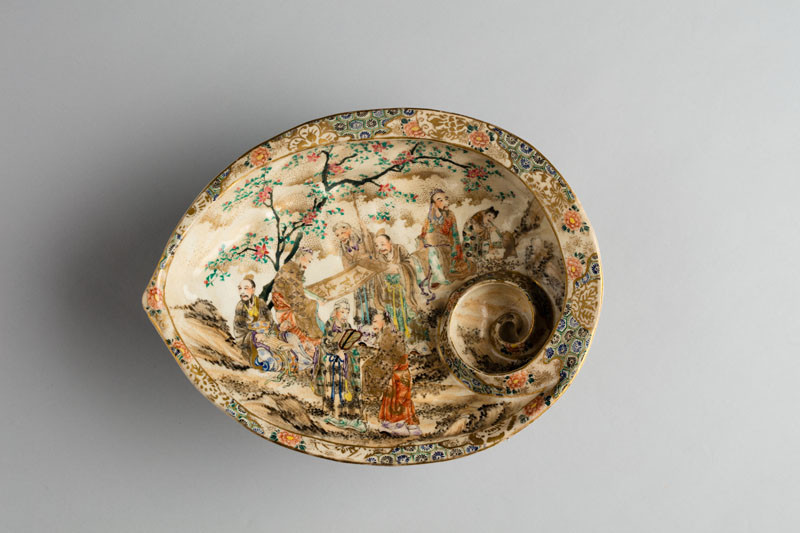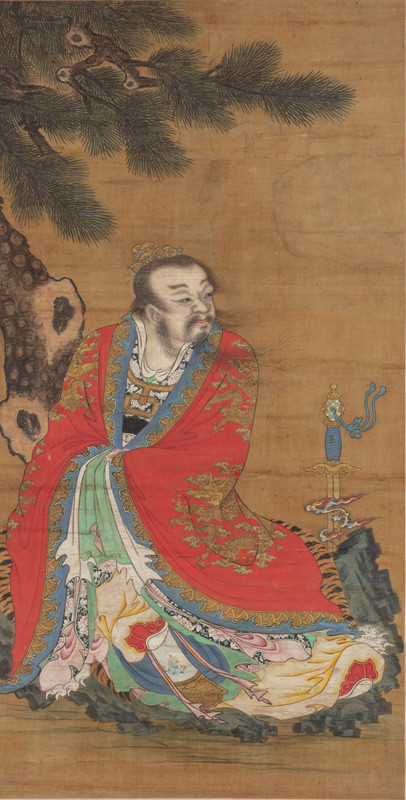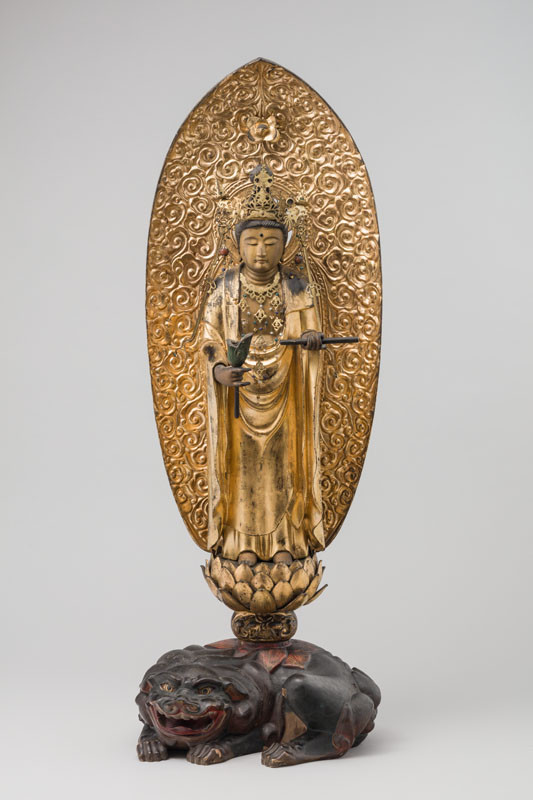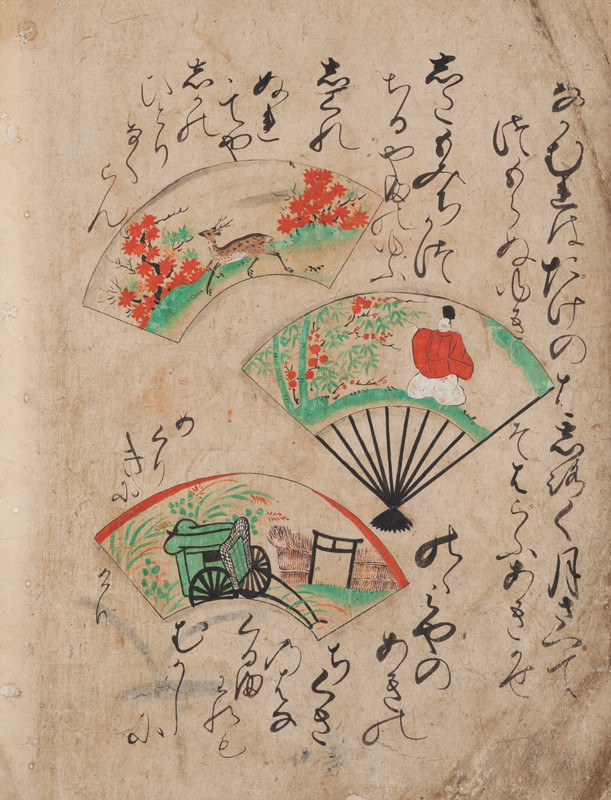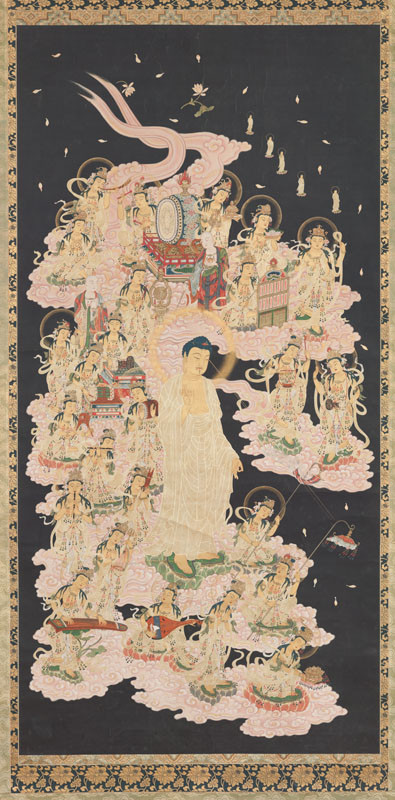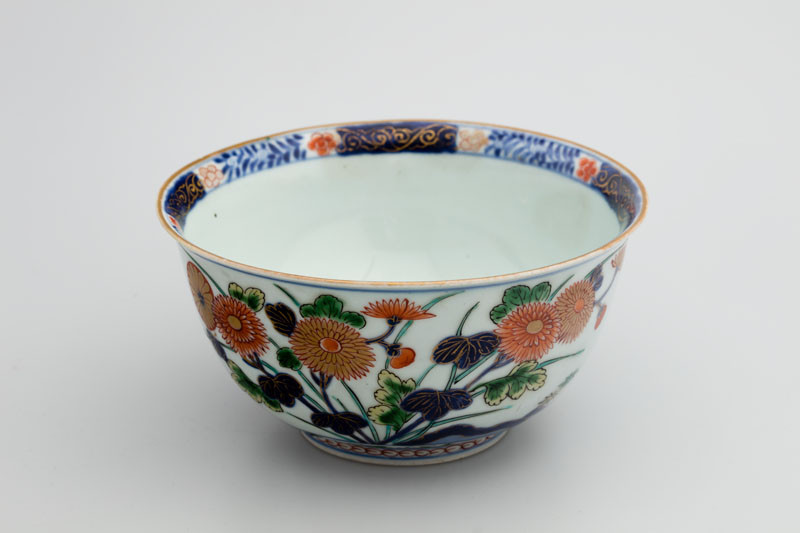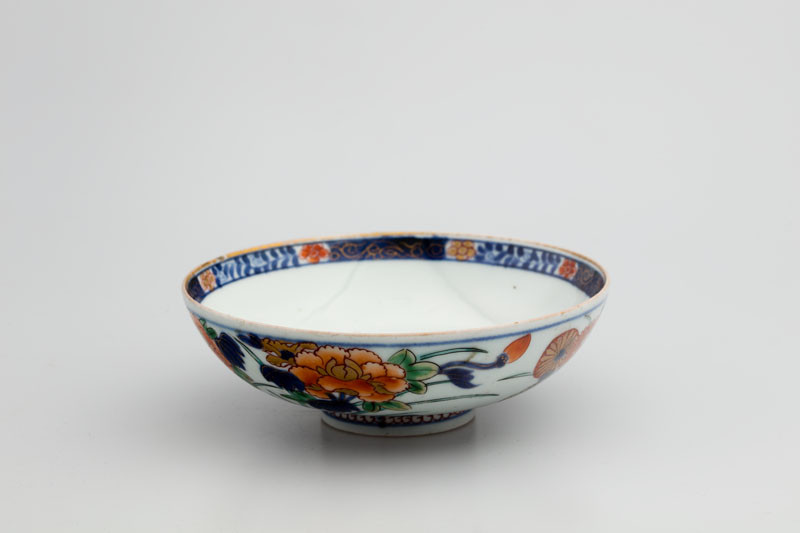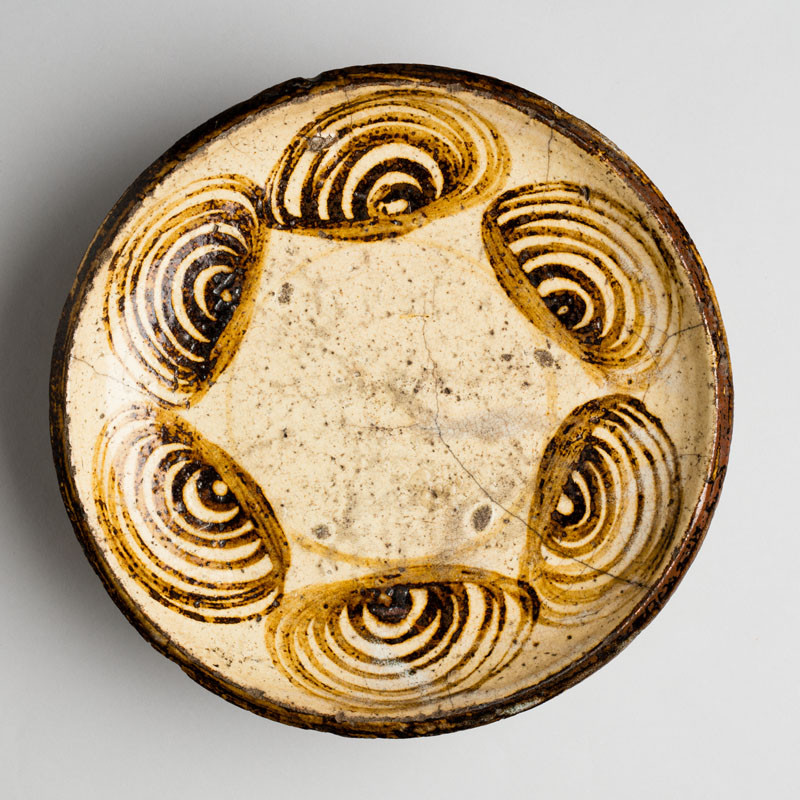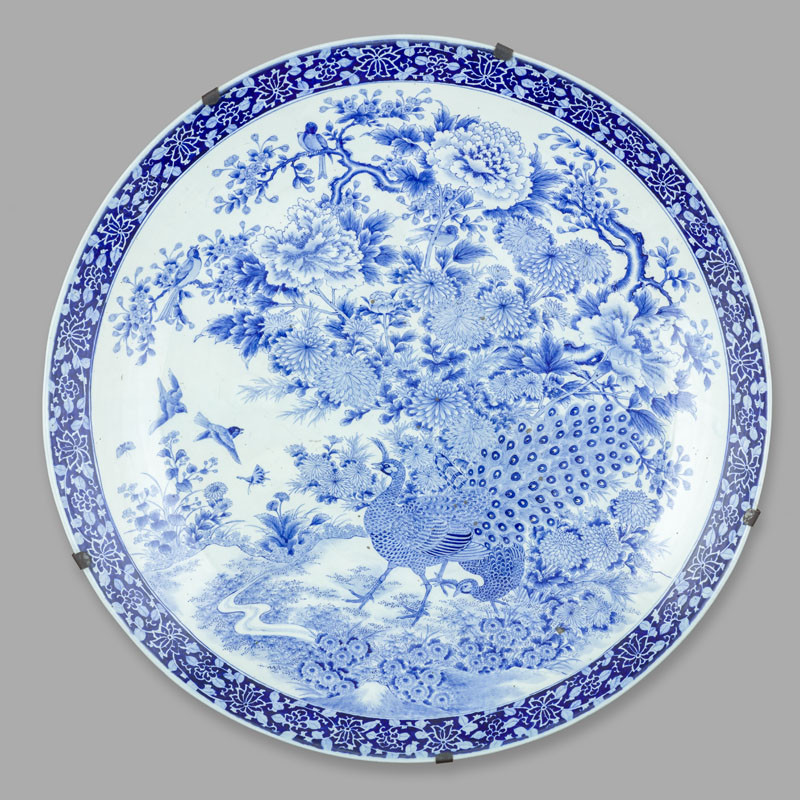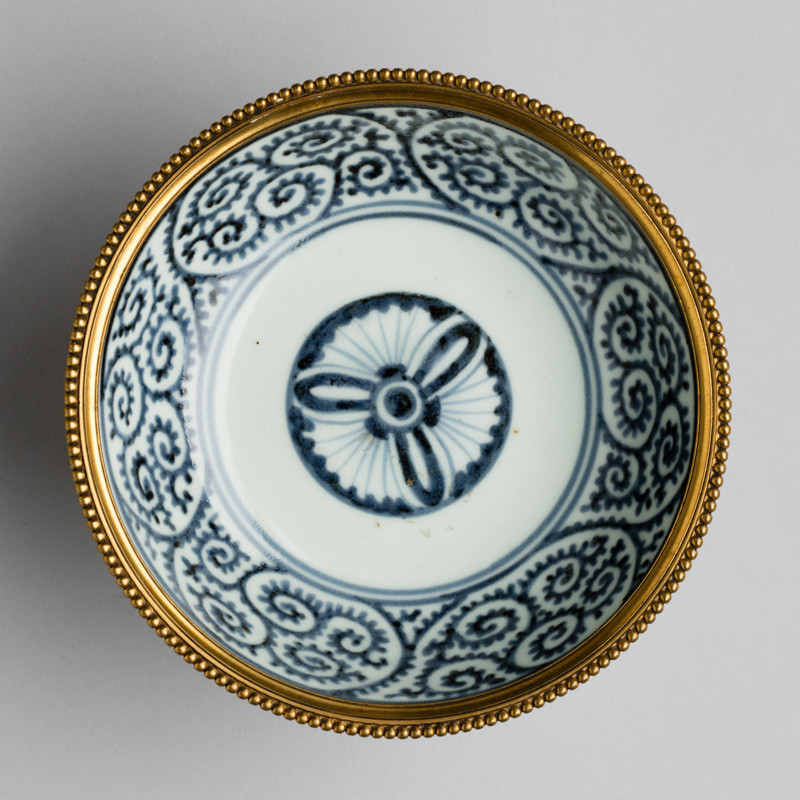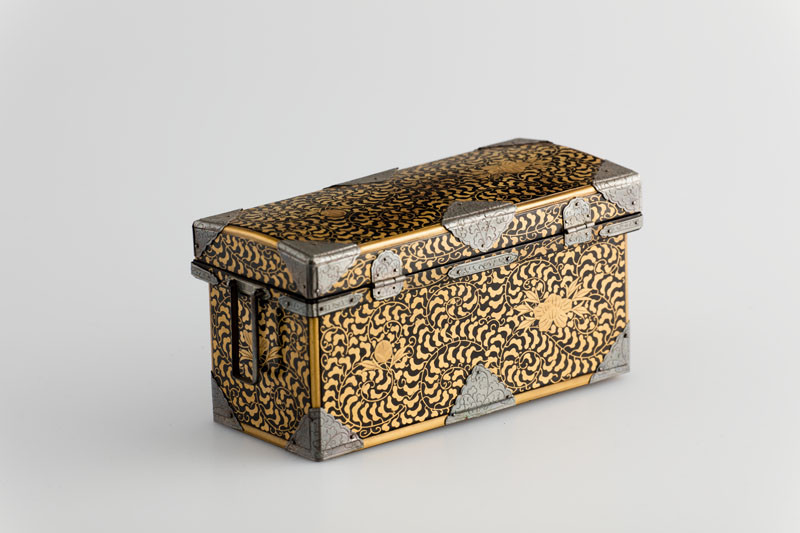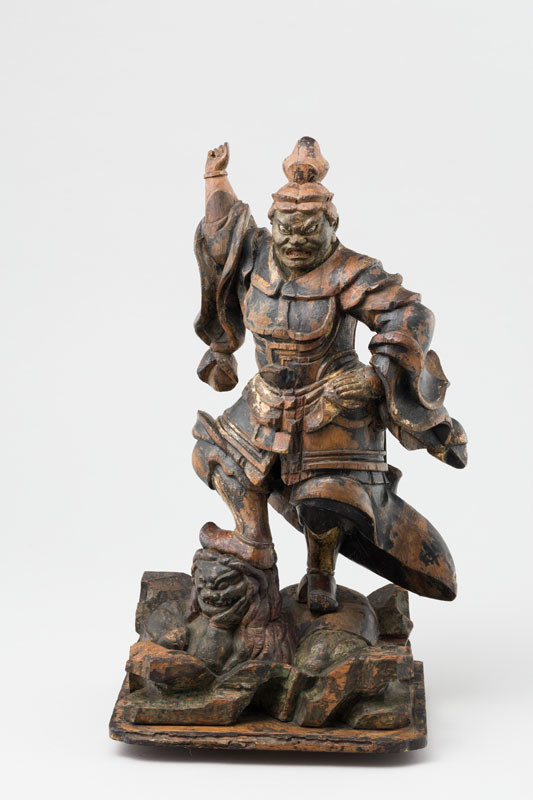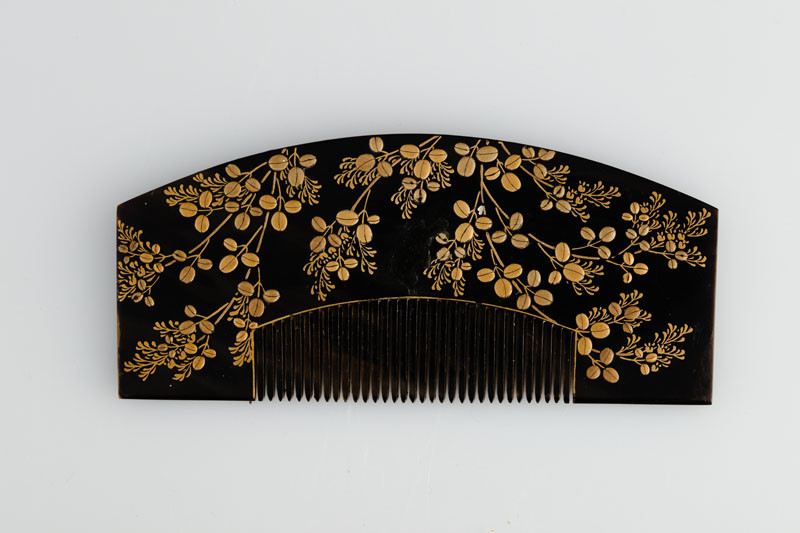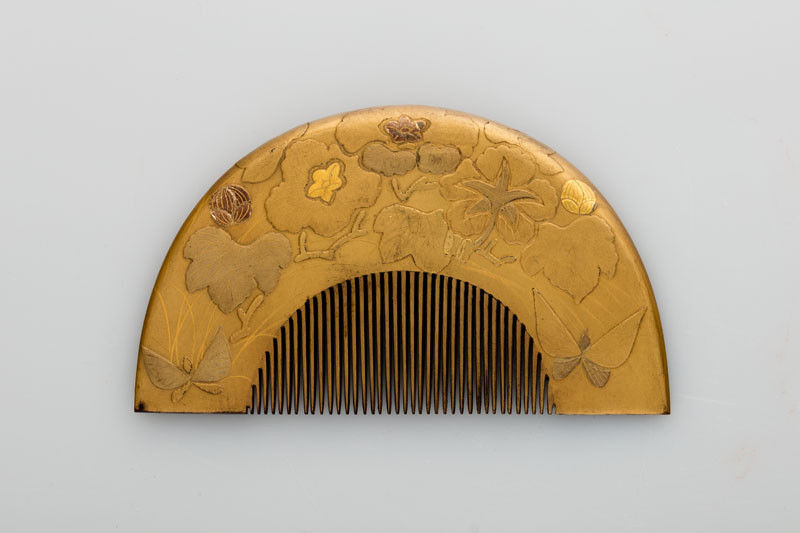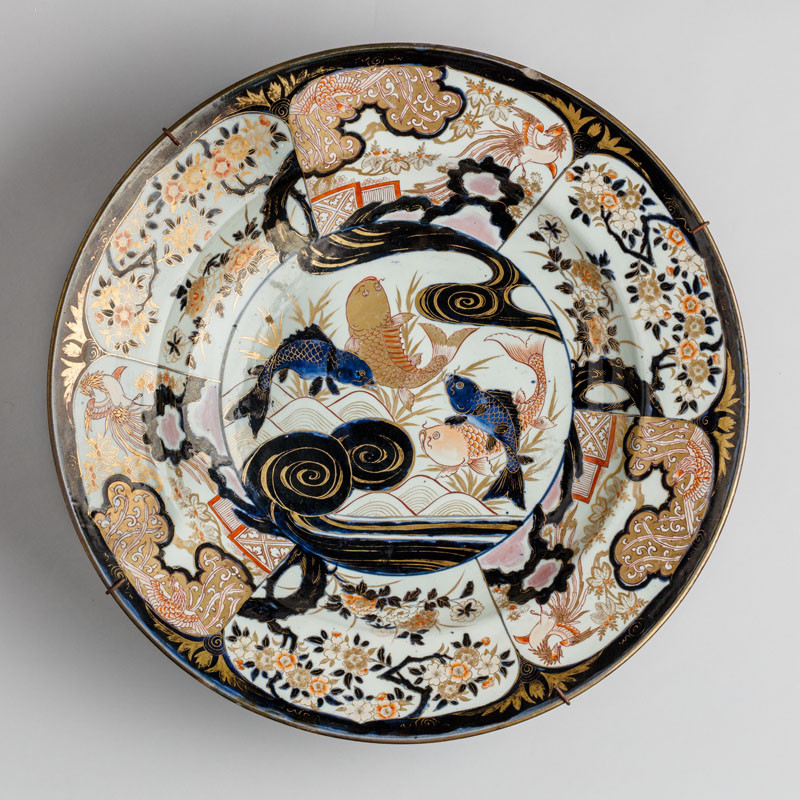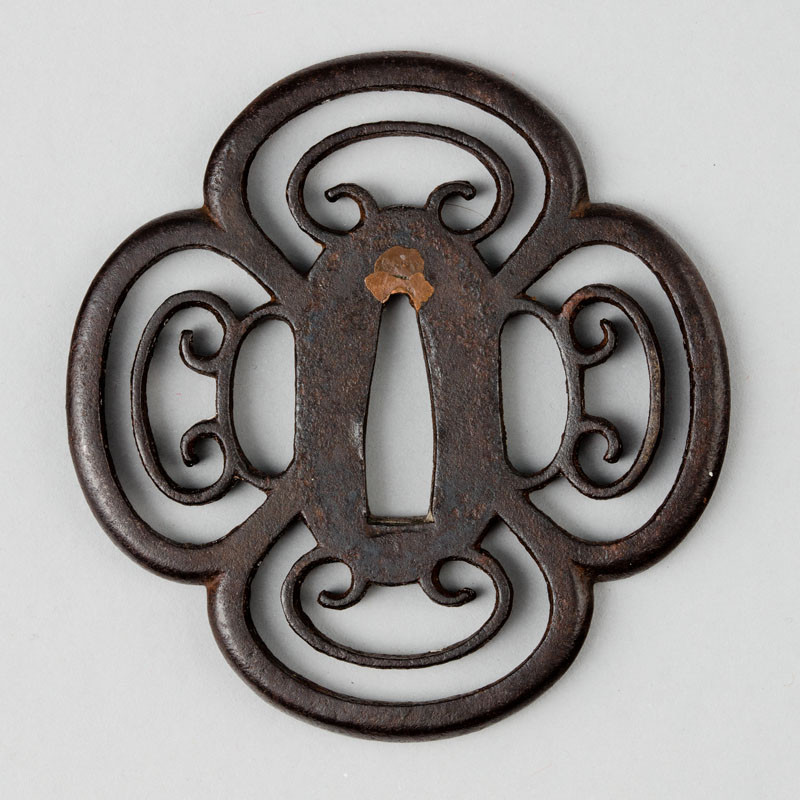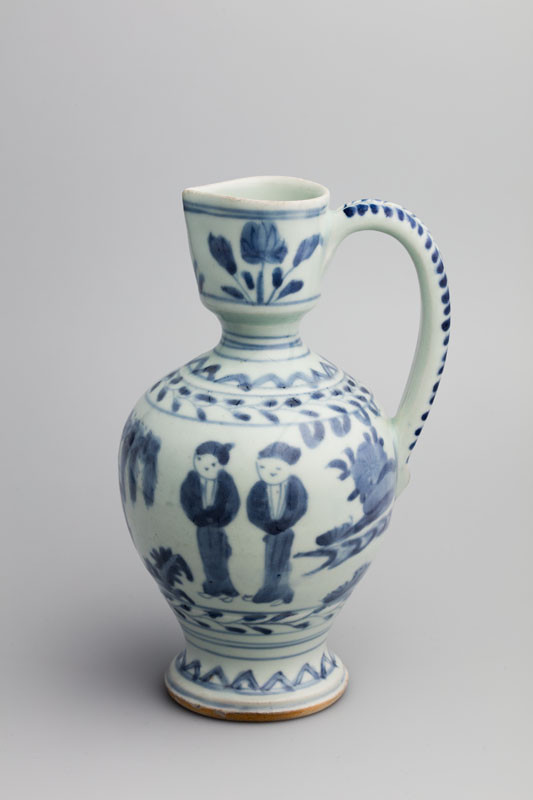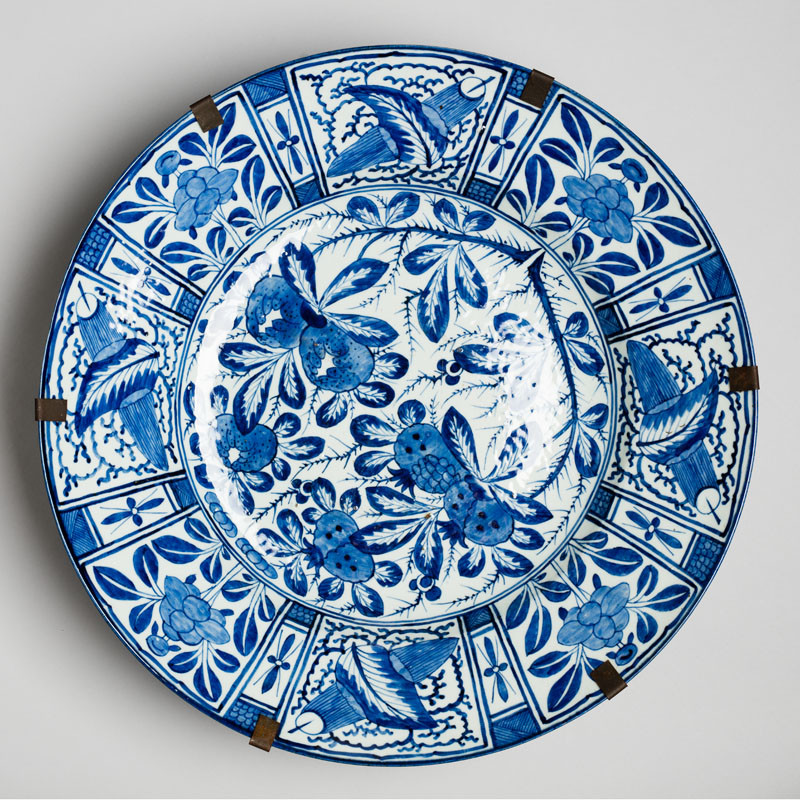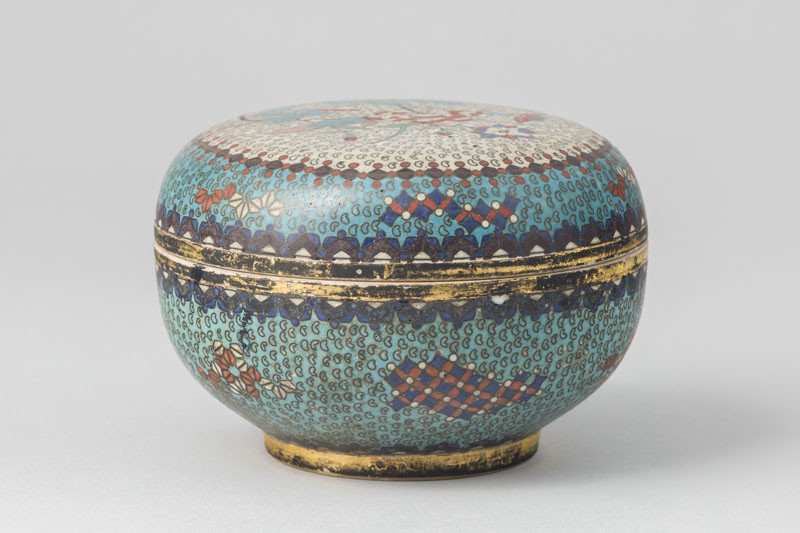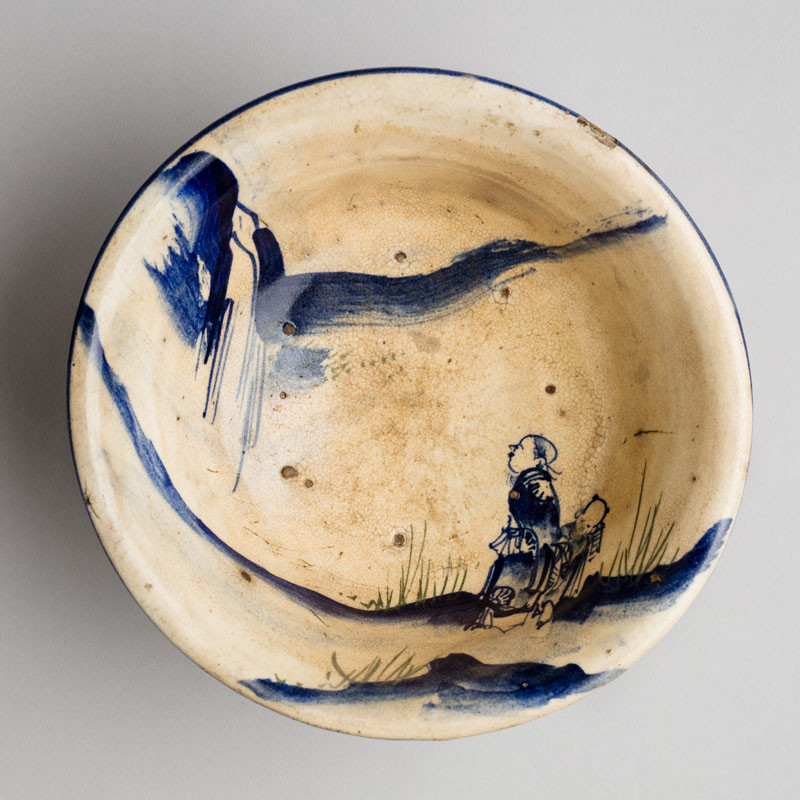
Ceramics production has always enjoyed excellent conditions in Japan owing to the abundance of raw materials. The first pottery products were made 12,000 years ago. At the turn of the era, potters began to use a wheel and improved firing a tunnel kiln to achieve a temperature of up to 1,200 degrees centigrade. The repertoire of forms gradually increased, and ranged from simple bowls to more complex shapes. While the centres were first situated mainly in the vicinity of the capital Kyoto, from the 13th century on they also appeared in the Owari and Mino Provinces near today’s Nagoya, where ceramics with engraved and embossed decoration and brownish celadon glaze were made. In Mino, ceramics with white feldspathic glaze were produced and decorated in underglaze iron oxides from the 15th century. In the same period, a ceramic centre was established in Bizen in southern Honshū. Special type of ceramic used exclusively for tea ceremony called raku is known from the 16th century on; it was most often fired in small kilns at very low temperatures. The first Japanese porcelains, whose sales boom is primarily linked to the development of overseas trade, appeared in Arita in the early 17th century. The first contacts with the Dutch East India Company after 1650 brought about a major turning point in production quality. In addition to Arita, ceramic workshops also opened up in the capital Kyoto. Owing to the interest of foreigners, the production centre for earthenware with lavish adornment of colourful surface decoration with a high gold content (called Satsuma for its place of origin in southern Kyūshū) shifted to Kyoto in the Meiji period.

